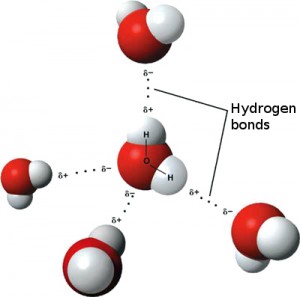Ok, so I can now say that I’ve been to a vortex in Sedona Arizona. Like any good tourist, I picked up a map at the hotel lobby and asked them what to look for. The lady behind the desk smiled and said she had no idea. She said that she had a collection of maps, but that I was on my own when it came to finding anything vortex like. It’s not like she told me anything that I wasn’t already expecting, but the conversation was overheard by a different lady sitting on the sofa. This other lady freely stated that she’d been out to a vortex or two and it’s something that you have to be sensitive too or you’ll walk right on by. The maps, she mentioned, will give you the basic idea of where to go, yet, if you pay attention, you’ll know exactly where to stand.
I’ve heard lots of people mention the vortexes at Sedona and, it seemed, that everyone has their own experiences when they go visit. Yet, because I’m always wanting to figure things out, I did a little research before going out. All the references seem to state just about the same thing and it goes like this (which I found on about.com):
So what is a vortex, anyway? Well you see them in everyday life. The turbulent flow of water makes vortices. If you have ever seen a whirlpool in a river or watched water going down the drain in the bath tub and have witnessed the tornado like glassiness of spinning water, you have seen a vortex. A vortex is created from spiraling motion of air or liquid around a center of rotation. If you have ever witnessed a dust devil kick up in the desert, you have seen a vortex.
In Sedona vortexes are created, not by wind or water, but from spiraling spiritual energy. The vortexes of Sedona are named because they are believed to be spiritual locations where the energy is right to facilitate prayer, mediation and healing. Vortex sites are believed to be locations having energy flow that exists on multiple dimensions. The energy of the vortexes interacts with a person’s inner self. It is not easily explained. Obviously it must be experienced.
Well, hey, I’ve flushed the toilet thousands of times and I’ve seen my fair share of dirt devils. But a spiritual energy vortex? That sounds like something out of Ghost Busters!
With the map in hand, we headed out to Bell Rock. After circling the parking lot for a while, we finally found a spot and prepared for our big hiking adventure. I looked at the map and then turned it so the map fit the layout of the land. Then, up the red dirt trail we walked. Even though it’s in the desert, the air was chilly and the air still held moisture from the rains that had falling during the winter.
A bunch of kids passed us on the trail riding bikes and we passed some people returning. I couldn’t help but wonder if they found the vortex we were looking for. In any case, we continued on the trail towards the diamond shape on the map.
One of the things that the map mentioned was that the Juniper trees are sensitive to the spiraling energy at the vortex. So, one of the things that you should look for are twisty branches. When I looked closely at the trees, I couldn’t help but laugh. All bonsai trees have a significant twist to the branches and these trees looked like larger bonsai. At that point, I figured we were on our own.
After we’d walked maybe 200 yards from the car, the trail opened up to cross a big rock before continuing around Bell Rock. As I stepped out on the rock, my head started to buzz. I didn’t say anything to Lori, but she looked up the hill and pointed saying that this looked like a good place to hike up the hill.
We did. After we climbed about 1/3 the rock, we sat and chilled for a half hour before heading back down.
Yep, that’s me standing on Bell Rock. I never did take a picture of the full rock formation; it might have been because the sun created too much glare.
Thinking that I just wasn’t sensitive to the vortex, we worked our way down a small cut in the hillside. It turns out, it led back to the same open area on the trail where the big rock widened the trail.
And my head started to buzz again.
This time I laughed. I guess I knew that we walked over the vortex on the way up, but it wasn’t until we came back to it a second time that it made sense to me.
Have you ever heard the Hu sound? The Hu is the sound of a Human. It is the sound that you hear when you quit you mind and calm your body. Here (http://www.youtube.com/watch?v=cpIrDJGVdO0) is a great external representation of the sound on YouTube. The thing is that the Hu is not something that you hear with your ears, but it’s something that you feel with your body.
At the same location as the YouTube video, there is a comment that really sums it up:
Oneisus Eckankar, ancient science of soul travel, uses this chant supposedly as a love song to God. The only real truth I got out of studying Eckankar was the realization that we and the grand universe are made up of light and sound, if you listen intently in a quiet place, you may hear a high pitch whistle in the center of your head which is the electrical current we are connected with (not to be mistaken for Tinnitus) it’s been there all your life but you may not have noticed it before. [bolding mine]
I have heard this sound a couple times in the last year when practicing yoga. It’s pretty powerful when you really tune into it. Yet, normally, I’m aware of it in a similar way as the person wrote in the quote about. It’s a high pitched buzz that is ever present and more pronounced during meditation.
So there we are standing on the rock. To me, the buzzing in my head has been amplified to a noticeable level. I asked Lori if she heard the same thing. She first shrugged it off as if our ears were ringing due to the hike. Yet, I asked her to check her heart rate and breathing. After a second, she realized, that it couldn’t be related to the hike, for we were both calm. There was nothing strenuous about our trek through the desert, yet both of our heads were buzzing.
At that point, I tried to pin-point the location or the center of the vortex. As I walked different directions, the buzzing tapered off until it was at a ‘normal’ level. I walked a number of directions and it turned out the trail went right through the center of it.
After standing there and experiencing it, we both kind of shrugged our shoulders and moved on. Other people walking the trail gave us weird looks, but hey, they could have just thought I was funny looking.
After we got back in the car, Lori mentioned it was like listening to the refrigerator running. I wonder if that’s the reason why more people are not aware of the Hu sound. Everyone just thinks that it’s something outside them humming.
In any case, I don’t know if I would call the vortex that I walked through a spiritual vortex. Yet, I can say that it amplifies the energy that constantly flows through us that can be heard as the Hu.
If you visit Bell Rock and find that vortex, it would be nice to hear about your experience.
Just above the vortex, there was a trickle of water off Bell Rock that could explain why all the plants could live. I fugured that I’d include that here, it was moving to me.








